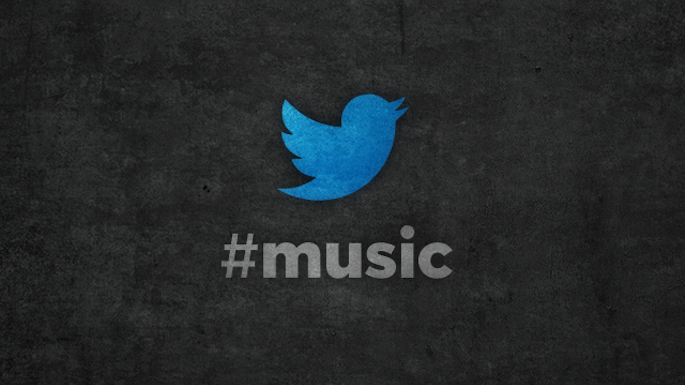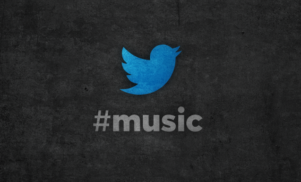
Twitter’s #Music app, described as “a fresh approach to finding new music by using Tweets and follows to power discovery,” launched today. Does it live up to its promise?
As reported, the app has been in the works for some time, with music industry influencers recently getting a sneak peak before today’s wide launch. After tooling around with it this afternoon, the #Music app clearly has some pros, cons, and room for improvement.
First, the basics: as an app, it’s sleek, easy to navigate, and intuitive. The 3×4 grid allows for easy browsing of artist icons and names, and clicking on the tiles results in a smooth, Tetris-like reorganization, and the animated spinning disc that accompanies each song is a cute touch. The app will play full length tracks when paired with Spotify or rdio (or an iTunes preview when not), but like Soundcloud, it will play the next track whether you want it to or not.
Which leads to the app’s glaring weakness, albeit one that could be easily fixed: the lack of integration with Soundcloud, YouTube and other platforms. The dominant services for music streaming are conspicuously absent, which makes judging the app’s accuracy impossible. However, Twitter has said that it will “explore and add other music service providers” in the future, which could change the app dramatically.
The #Music app is broken into four charts: Popular, Emerging, Suggested, and #NowPlaying. Popular is exactly what you’d expect, and of little use to most FACT readers. For reference, the Psys and Pinks of the world dominate this one, but Miguel, Lana Del Rey, and Jessie Ware pop up in the top 50, with Frank Ocean in the hundreds.
The Emerging chart, which promises “hidden talent,” is key to Twitter’s goal of making #Music to go-to app for music discovery. Based on the recently acquired We Are Hunted algorithm, the results are mixed at best. Currently sitting at the top of the chart are post-rockers The Appleseed Cast, a band who are about to release their eighth album since 1997 — not exactly what we’d describe as “emerging.”
Clearly, “emerging” is in the eye of the beholder: Disclosure and Beach House sit in the 30s, with L-Vis 1990 and Purity Ring in the 50s. While these acts have been a part of the online music conversation for a few years, they’re just breaking through to a larger audience now. Cross-referencing this chart with a list of musicians followed would be helpful, as well, removing artists whose music is demonstrably out of a user’s wheelhouse.
Next up is the Suggested chart, which is accurate but of limited utility. This is basically a targeted application of Twitter’s “suggested users” function: the picks were mostly on the mark, but comprised of artists a user might not be following of Twitter for a variety of reasons, e.g. rappers prone to overtweeting, or particularly combative bedroom producers.
The flipside of #Music’s discovery functions is #NowPlaying, which appears to rely on the hashtag of the same name. That’s clearly shortsighted: while it’s been a popular tag for years, it clearly misses huge swaths of links to and discussions of music — or even when people have used the just-as-prevalent #np tag. FACT’s #NowPlaying chart was limited to a dozen tracks, mostly by Rinse FM, since they frequently tag their on-air tracks. On a personal account that follows several hundred people who post and discuss music frequently, there were just four entries. More like #NotPlaying.
With nearly half a billion users (and over 200 million active ones), Twitter clearly had to make a product that would appeal to a wide cross-section of its user base, from Beliebers to FACT readers and all points in between. For most users, Twitter #Music will do a fair enough job, especially if and when Twitter includes the platforms on which most people discover music (namely Soundcloud and YouTube). For music obsessives, this is a reminder that no app will ever replace dedication, word-of-mouth, and spontaneous discovery. For music journalists, this is one more day that we’re not replaced by algorithms and applications.





























